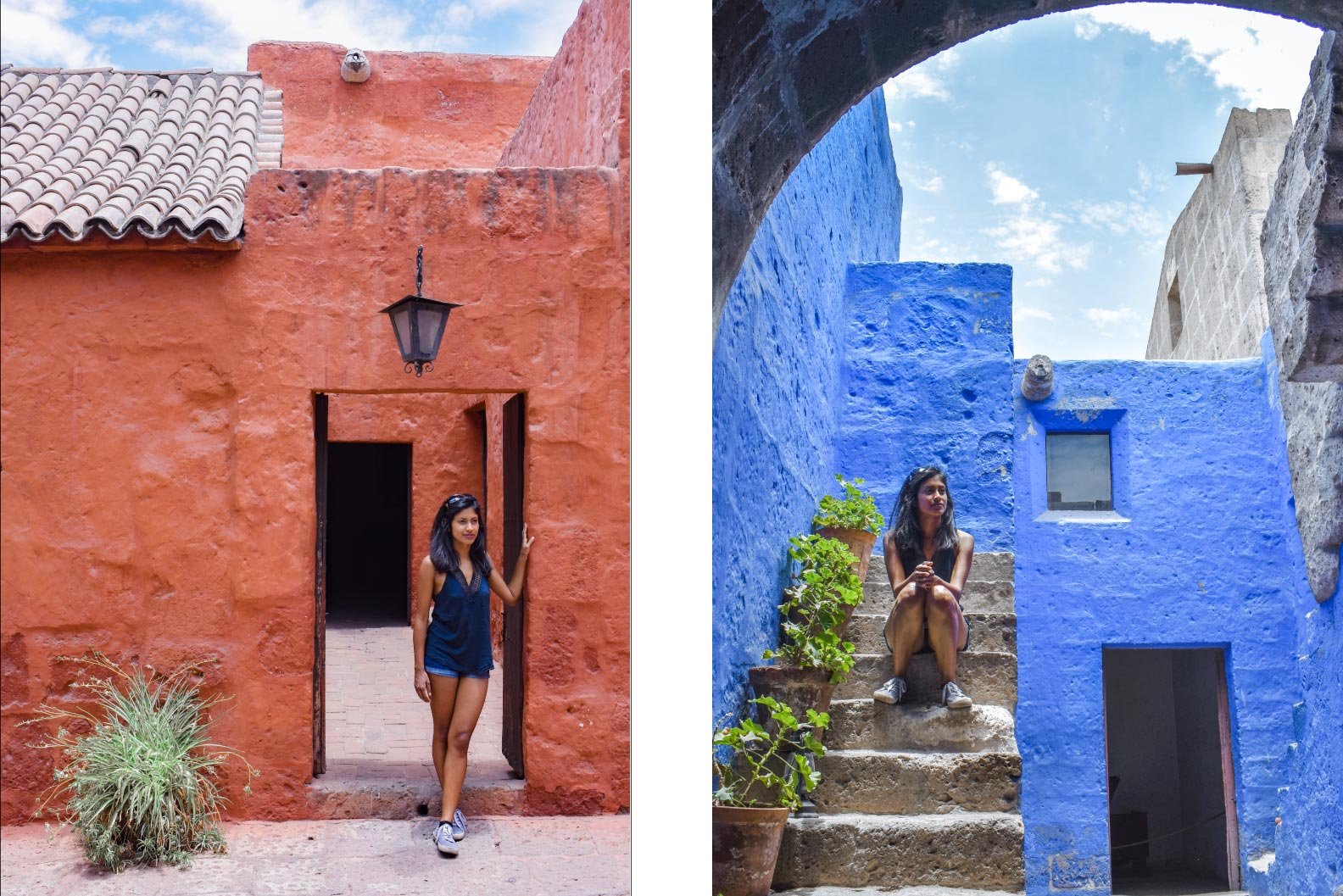THE BEAUTIFUL MONASTERY OF SANTA CATALINA DE SIENA, AREQUIPA: WHY YOU NEED TO VISIT
Arequipa is a haven. Without a question one of Peru's most beautiful cities, its distinct Spanish influence doesn't go unnoticed. So much so that one could be forgiven for thinking you were in the south of Spain. Its beautiful dusty white buildings constructed from Sillar, a volcanic white stone quarried locally and a mix of European and Peruvian designs give the city its own distinct character and flavour.Nestled at the heart of Arequipa, often referred to a city-within-a-city, The Monastery of Santa Catalina de Siena was founded in 1579, less than 40 years after the Spanish arrived. Women from various backgrounds entered the convent to serve as cloistered nuns. Family's paid dowries for their daughter's admission and a cell was allocated according to the sum of money. Whilst a small part is still functioning and shut off from the public, the convent is considered largely a thing of the past today.
The courtyards of Santa Catalina
After the earthquakes of 1958 and 1960, The Santa Catalina Convent was restored and officially opened to the public in 1970. When first entering the convent, I mistakenly believed it to be a quick 30-minute tour. In fact, we spent over 2 hours exploring the various cells, streets, garden and churches inside. It really did feel like I had escaped for the day to another city and couldn't believe the scale and beauty of the convent.Each cell had its unique characteristics, with the wealthier nuns clearly occupying the larger spaces. Medical treatments were handled inside the convent. In fact, the city is pretty much equipped with everything, from laundry facilities, parks, houses, gardens, churches, kitchens and a cemetery. Literally, everything needed for a city to go about its day.
Kitchen inside one of the cells
Life was simple but it didn't start out that way. Wealthy families paying large sums as dowries would not only provide for larger cells but also servants. Eventually, the Vatican intervened, servants were sent away and the nuns had to take care for their own upkeep with many duties becoming communal.Leading isolated lives, their only way of communication to the outside world was via a window separated with bars to prevent contact between the nuns and their visitor, not to mention the impressive high walls. Nuns would sell small items to the public to earn a little money which would then be used collectively for the upkeep of the convent. Contact with the outside world was strict and was even prohibited in the case of a family member being sick. Nowadays permission is granted for extenuating circumstances.
Streets of Santa Catalina
Ornately decorated and incredibly beautiful, The Monastery of Santa Catalina is undoubtedly one of Peru's cultural heritage sites. It's definitely worth a visit if you're in the area. Curious by its close proximity and to some extent dependence for materials from the outside world yet almost complete isolation and seclusion, I found it to be one of the most intriguing places I have visited.
The colourful walls inside Santa Catalina
The cost of an adult ticket is 40 Soles, so it's not the cheapest of tourist attractions however given the history it's well worth the visit. Guided tours are also available for around 15 Soles. You can find out morehere.
Ready to plan your trip? Here are some of my favourite travel suggestions.
Booking.com: For the best hotel deals! 🏝
World Nomads: Travel insurance on the go 🌎
Favourite travel items: Some of my go-to travel essentials ✈️
Affiliate links above!
Mandatory Disclaimer: We receive a fee when you get a quote from World Nomads using this link. We do not represent World Nomads. This is not a recommendation to buy travel insurance.






